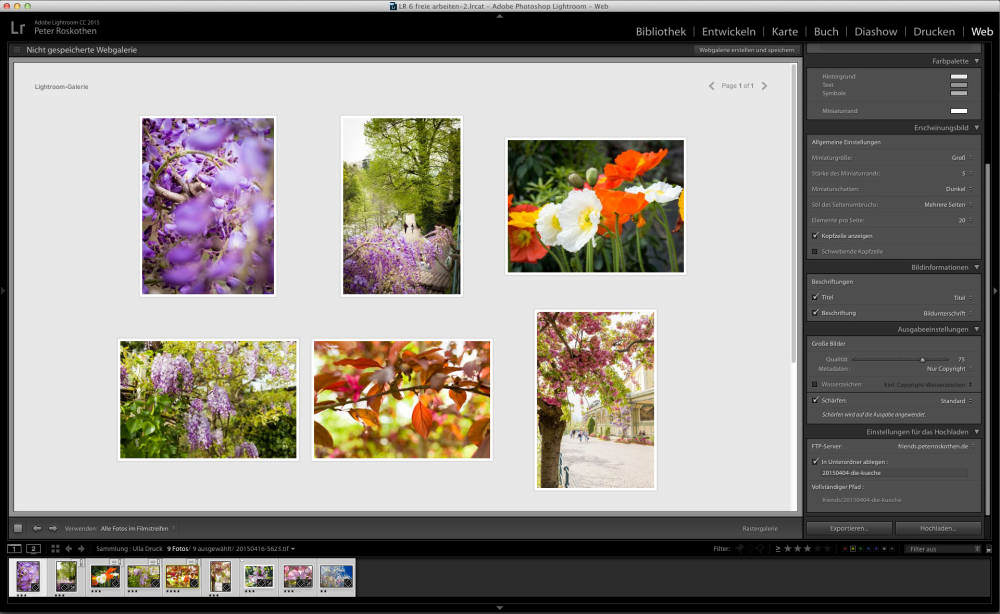

I intend to do a more comprehensive comparison of select RAW converters, but I’ve been holding off partly in anticipation of Lightroom 6 and Photo Ninja 2. You’ll need to make some adjustments to your workflow, but that’s the tradeoff if image quality is paramount.
#ADOBE LIGHTROOM 6 VS 5 UPGRADE#
This is still more than enough to keep me convinced that if you really want to get more detail out of your RAFs, spend your Lightroom upgrade money on an Iridient Developer licence instead. In truth, I spent less than a minute optimizing the settings in Iridient Developer, and there are times when I still prefer the “old” Hybrid Sharpen method. This is another reason I like Iridient Developer so much its sharpening methods are more forgiving in that global sharpening can be pushed further before areas like in the top left where the building meets the sky gets riddled with sharpening halos. If I had inclination to get into selective sharpening, the inner areas of the building could be sharpened much more than those areas against the sky. In general, I find I’m able to get away with more aggressive sharpening in Capture One, depending on the kind of image it is. Adobe’s Amount slider goes from 0 - 150, whereas Capture One's go from 0 - 1,000.
#ADOBE LIGHTROOM 6 VS 5 SOFTWARE#
That challenging part about comparing Lightroom and Capture One is the companies that make the software have very different ideas about how sliders should scale. This is really just the highest I would set the Amount slider, lest the image starts taking on “false detail” and getting too “crunchy,” as we’ll see below. For another, this method of sharpening (high amount, lower detail) is widely regarded as sub-optimal. For one thing, what is optimal to me, and what’s optimal to you may be entirely different. I’m making liberal use of the word “optimal” here. I don’t think this is actually chromatic aberration, since it does not appear rather it could be a byproduct of Adobe trying to improve transitions from blue areas to other colours. Lightroom 6.1 already appears to be slightly more aggressive with its sharpening of fine detail, however it appears to handle the removal of aberrations much less well. Pay close attention to the brick, the roof tiles, and wrought iron detailing on the rooftop towards the left of the frame.

Perhaps of note is that despite it now being relatively common knowledge that Adobe Camera Raw performs better with RAFs when we make liberal use of the Detail slider, the defaults remain the same with both Amount and Detail set to 25. 6.1 for X-Trans Best X-Trans RAW Converter Long Exposure Photography Tips Heavy Issues Mirrorless vs DSLR weight Adobe’s Fujifilm Camera Calibration Profiles Film Simulation Modes Compared Fujifilm Metering ONA Bowery vs. Extras Fuji Filter Thread Sizes Lightroom 5.7 vs.Reviews Fujifilm X-T3 Fujifilm X-H1 Fujifilm X-T2 Fujifilm X-Pro2 Fujifilm X-T1 Fujifilm X-T10 Fujifilm X70 Fujifilm X30 Fujifilm GFX 50S Preview XF 14mm F2.8 XF 16mm F1.4 WR XF 18mm F2 XF 23mm F1.4 XF 35mm F1.4 XF 35mm F2 WR XF 56mm F1.2 (APD) XF 10-24mm F4 OIS XF 16-55mm F2.8 WR XF 18-55mm F2.8-4 OIS XF 50-140mm F2.8 OIS WR MCEX-11 & MCEX-16 Extension Tubes VPB-XT2 Vertical Power Booster Grip Fuji MHG-XT Hand Grip Artisan & Artist Silk Strap LumaLabs Loop 3 Nucis Leather Straps.Lens Versus Wide Angle Primes Standard Zooms Telephoto Zooms 10-24mm F4 vs.X20 Interchangeable Lens Body Spec Comparison Fixed Lens Body Spec Comparison


 0 kommentar(er)
0 kommentar(er)
